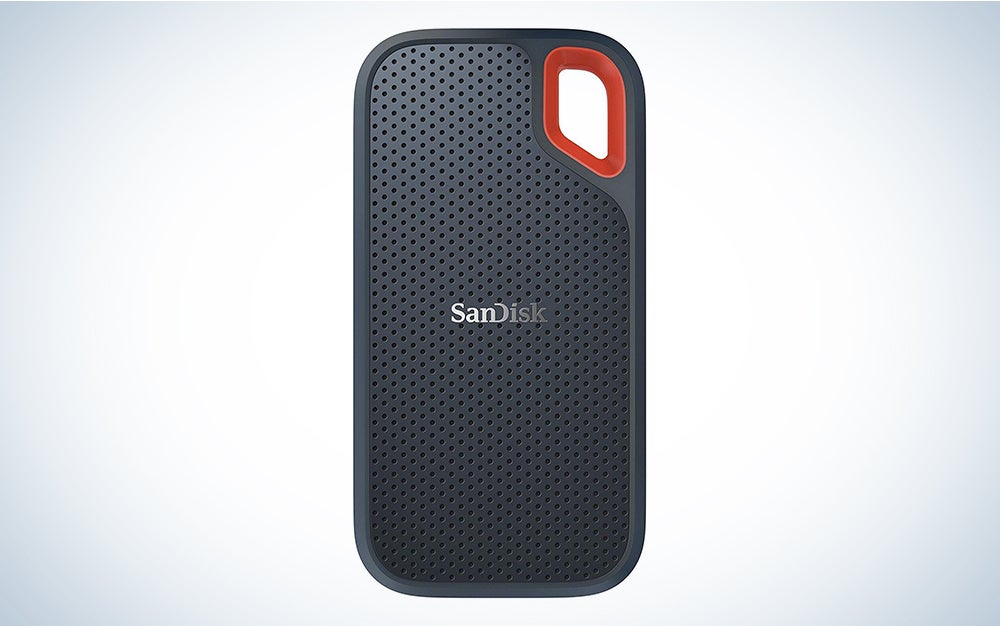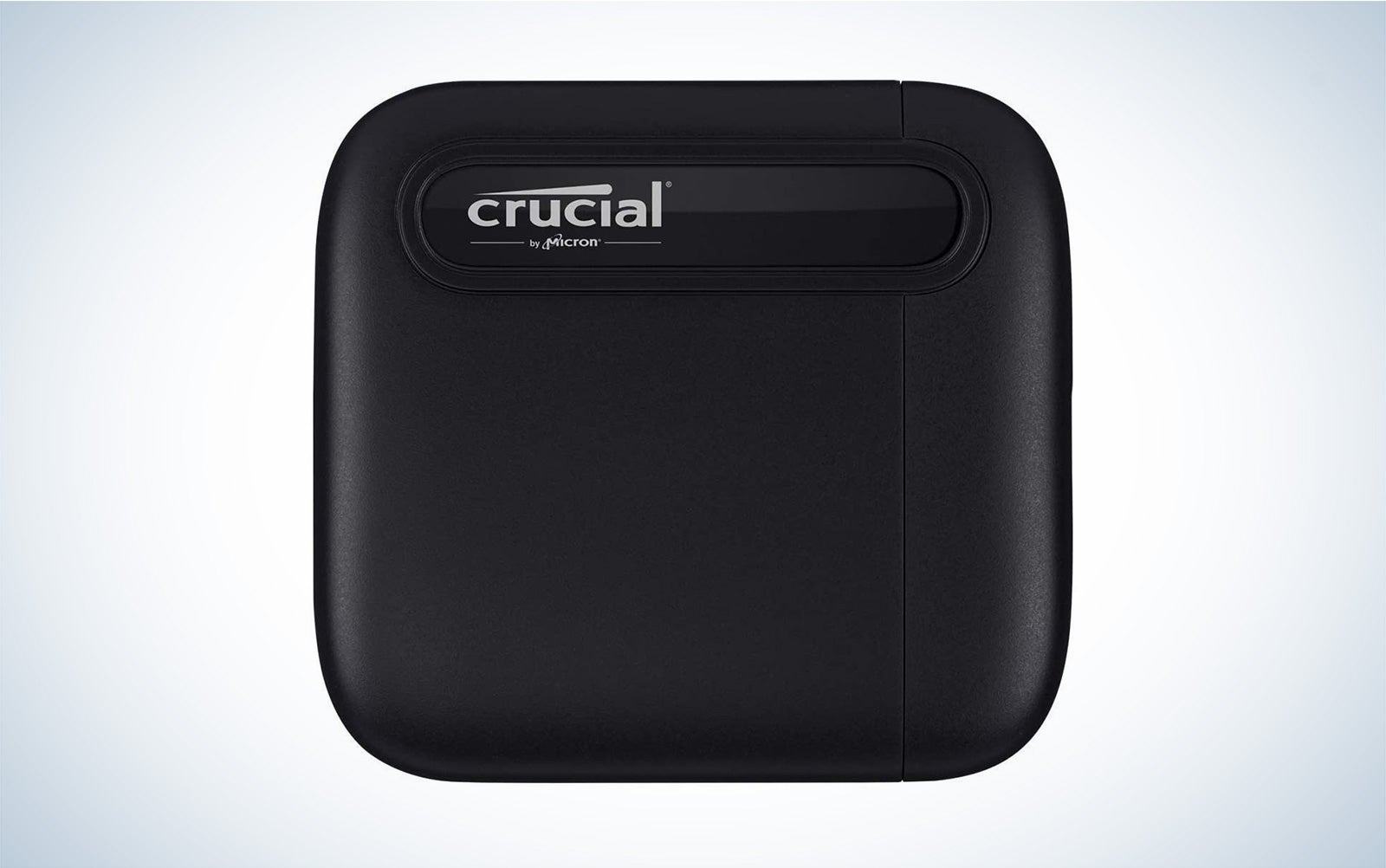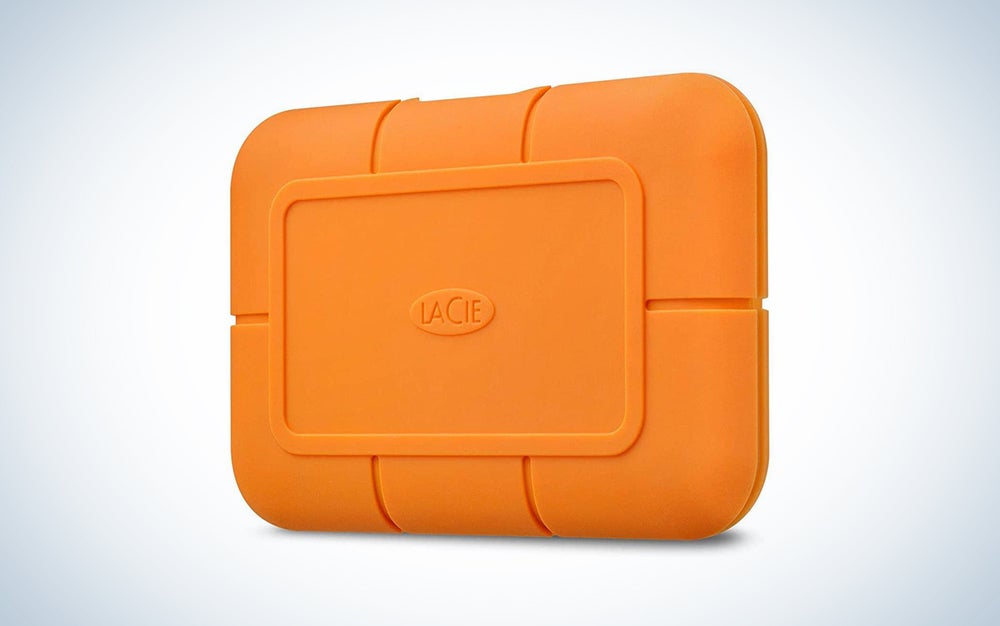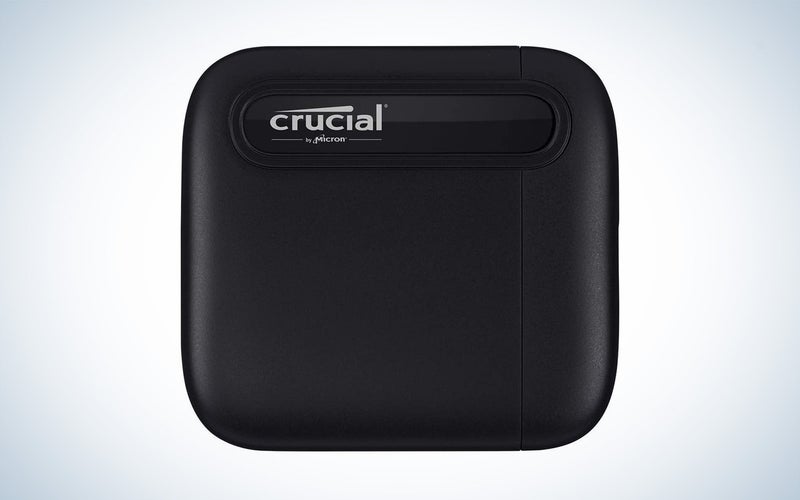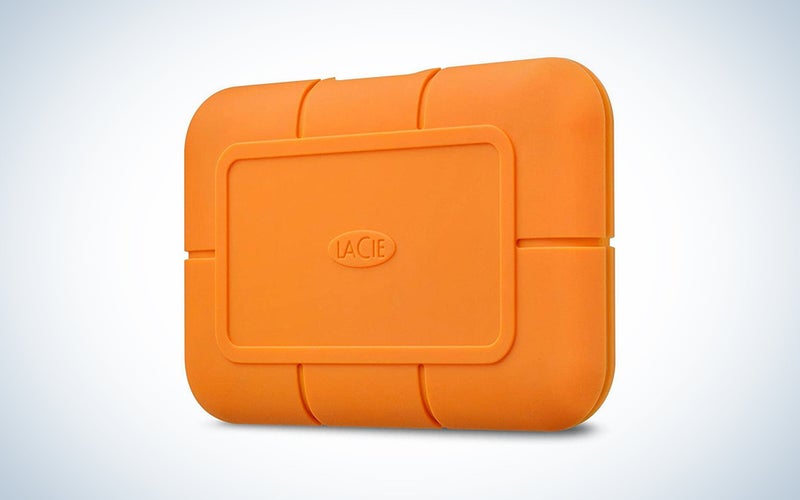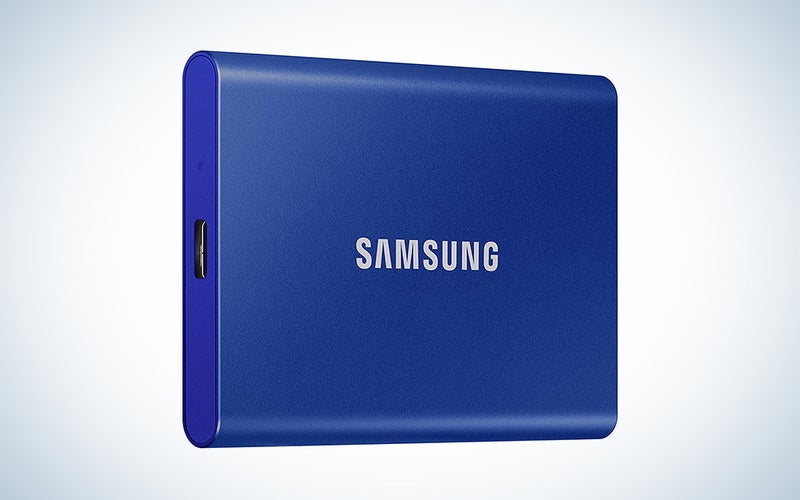
Whether you’re backing up files in the field or just trying to keep your laptop’s internal drive free from clutter, an SSD drive can help. If you’ve been capturing memories with your camera for a while, you know there are two types of drives: one that has already failed and one that is about to fail. Made up of flash memory chips soldered on a circuit board, an external solid state drive (SSD) lacks the moving parts found in traditional external hard disc drives (HDDs) which makes the SSD less susceptible to damage from shock, plus gives it the ability to run quieter and faster. Ultimately, the best SSDs to be a lot more reliable when you are traveling around than using a drive with a spinning disc.
- Best overall: SanDisk 2TB Extreme PRO Portable SSD
- Best value: Crucial X6
- Best rugged external SSD: LaCie Rugged SSD 1TB Solid State Drive
- Best large-capacity external SSD: VectoTech Rapid 8TB External SSD
- Best budget external SSD: Samsung SSD T7, 500GB
How we chose the best SSDs
The writers and editors at PopPhoto are constantly moving photo and video files around, which makes fast transfer speeds and reliable drives crucial to our process. To choose the best SSDs, we relied on hands-on testing, personal experience, spec comparisons, editorial reviews, and user feedback to find drives with the right mix of portability, reliability, and affordability. We focused on drives from reputable companies with solid reputations for not losing data. We also emphasized portability and stuck only to portable SSDs since internal SSDs are an entirely different can of worms.
Why choose the best SSDs over a traditional large-capacity HDD?
Because an external solid state drive forgoes the physical spinning platters of traditional hard disc drives, it also avoids the space needed for a spindle, an arm with a magnetic read/write head, etc. This means SSDs are typically smaller and faster than an HDD. All that static silicon is a great option when on location and/or working on time-sensitive assignments, as beyond being durable they are compact and typically have faster read and write speeds. Although a large-capacity HDD array and/or the cloud are better choices for archival storage, having a speedy SSD drive at your disposal is ideal for accessing and storing your most recent projects while on the go.
In recent years the speed and capacity rates of SSD drives on the market have exploded. Selecting the right SSD drive for you has a lot to do with the files on it, where you will use it, what transfer speeds you require, and how much space you need. If you are working with a lot of 4K video files, a large capacity 4TB drive might be the best option for you. If you are diligent about getting your files off of the SSD and into an archival storage system and are primarily shooting photographs, smaller capacity computer storage options will probably suffice. These are just some of the things that you should consider when selecting the best SSD.
Related: Protect your gear with the best waterproof camera cases
Things to consider when shopping for external computer storage
When shopping for computer storage, the price of the drive has a lot to do with storage capacity and read/write speeds. Larger capacity drives with faster read/write speeds will typically be the most expensive, while lower-capacity drives with slower speeds will cost less.
Speed
Speed and reliability are probably the most important features for photographers, while capacity is likely more crucial for videographers. To futureproof yourself with the fastest transfer speeds, the best computer storage will be USB 3.1 or 3.2—avoid the older, slower USB 3.0 models. Some drives offer a rugged build for additional protection, which is great if you often find yourself working outdoors or in a location where you have to improvise with desk space. The majority of SSD drives are compatible with both Mac and PC and just require formatting for the appropriate platform before use.
Size
The physical size of SSD drives can vary greatly, as do colors and design elements, but these factors are typically less important than capacity and read/write speeds when it comes to computer storage. Ultimately, however, the best SSD for you is the one that fits in your bag and can fit all your files. Here are our suggestions for the best photo storage that fits in a pocket.
Connectivity
Most drives on the market at the moment connect to a computer via USB-C. Speed can vary with that connection, so be sure to make sure the device comes with a cable that makes the most of your computer’s actual connections. Some drives have the cable integrated, while others require you to carry an external wire. The former has an advantage when it comes to convenience (you’ll never be out of luck when you forget a cable), but if that wire dies, it takes the whole device with it.
Best 2TB external SSD: 2TB SanDisk Extreme PRO Portable SSD
Amazon
Why it made the cut: SanDisk has been making portable SSDs as long as anyone and that refinement comes through in speed and quality.
Specs:
- Capacity: 1TB, 2TB, and 4TB
- Speed: Up to 2,000 MB/s
- Size: 0.41 x 2.28 x 4.36 inches
- Weight: 2.72 ounces
Pros:
- Fast
- Reliable
- Very portable
Cons:
- Pricy
The 2TB SanDisk Extreme PRO Portable SSD has 2000MB/sec read/write speeds and is made of a forged aluminum that acts as a heat sink for the drive. It’s a rugged 2TB external hard drive in a tiny package that has 2-meter drop protection, is IP55 water and dust resistant, and has a little loop for a carabiner to keep it securely attached when you are on the move. The SanDisk SSD includes 256-bit AES encryption and password protection for when you are carrying sensitive data. It fits in the palm of your hand, and SanDisk SSDs also come in a 1TB capacity if you need less space and/or are working on a tight budget.
Best for speed: Crucial X6
Crucial
Why it made the cut: This compact drive fits easily into a pocket and won’t cost you a ton of money.
Specs:
- Capacity: 500GB, 1TB, 2TB, and 4TB
- Speed: 800MB/s
- Size: 2.72 x 0.43 x 2.52 inches
- Weight: 1.48 ounces
Pros:
- Easy to fit in a pocket
- Up to 4TB storage
- Affordable
Cons:
- Not as fast as others on the list
This Crucial drive has rounded edges and a small form factor that make it easy to stick into a bag or even a pants pocket if you need to move in a hurry. At 800MB/s it’s not quite as fast as some of the other drives on this list, but it’s still speedy enough for transferring files and even video editing if you need it. It relies on a removable cable with a USB-C connection, but it comes with both a USB-C and USB-A cable to work better with older laptops.
Best rugged external SSD: LaCie Rugged SSD 1TB Solid State Drive
Amazon
Why it made the cut: Lacie has been making rugged drives for decades and has earned its solid reputation.
Specs:
- Capacity: 500GB, 1TB, 2TB
- Speed: 1,050MB/s
- Size: 0.67 x 2.56 x 3.85 inches
- Weight: 3.53 ounces
Pros:
- IP67 rating for toughness and water resistance
- Rugged, rubberized coating
- Easy to see in a bag
Cons:
- Big and heavy
LaCie’s bright orange drive has IP67-rated water and dust resistance, three-meter drop protection, and 2-ton car crush resistance. If you are going to be transferring photos and videos in the unforgiving outdoors, this is the drive for you. It offers read/write speeds up to 1050MB/sec for 4K footage and has Seagate Self-Encrypting technology. As an added bonus, the LaCie drive comes with a one-month complimentary membership to Adobe Create Cloud and a five-year protection plan with data recovering services in case you run into issues.
Best large-capacity external SSD: VectoTech Rapid 8TB External SSD
Amazon
Why it made the cut: With a maximum capacity up to 8TB, this drive can hold more than its competition.
Specs:
- Capacity: 1TB, 2TB, 4TB, and 8TB
- Speed: 540MB/s
- Size: 5 x 3 x 0.4 inches
- Weight: 7 ounces
Pros:
- 8TB storage option is tops on the list
- Rugged aluminum shell
Cons:
- Relatively slow speeds
- Big and heavy
Larger capacity drives come with much higher prices, but if space is what you need you can’t do better than this 8TB SSD drive from VectoTech. It has 540MB/sec read/write speeds and comes with USB Type C to C and USB Type C to A cables, so it can work with the majority of Windows PC, Apple and Android devices supporting USB C/Thunderbolt (as well as legacy USB ports). It’s constructed of 1050 grade aluminum and is shock resistant up to 1.8-meter drop.
Best budget external SSD: Samsung SSD T7, 500GB
Amazon
Why it made the cut: This small, affordable option is great for occasional backups.
Specs:
- Capacity: 500GB, 1Tb, and 2TB
- Speed: 1,050MB/s
- Size: 3.3 x 2.2 x 0.3 inches
- Weight: 1.48 ounces
Pros:
- Very compact
- Fast transfers
- Affordable
Cons:
- Barebones feature list
Drive capacity is the main thing that drives up the price of SSD hard drives, so folks looking to save should opt for a drive with a lower capacity. That doesn’t mean you have to opt for lower quality, however, because you can get a Samsung SSD for that price. This 500GB Samsung SSD has a read/write speed of 1050MB/s and 1000MB/sec, is shock resistant and can withstand drops from 1.8 meters, features dynamic thermal guard to prevent overheating, and can be password protected. At under $100 for the 500GB version, this Samsung SSD won’t put nearly as big of a dent in your wallet as some of the other drives on this list.
FAQ
Q: Is an external SSD worth it?
If you are a photographer or videographer, an external SSD drive is an invaluable tool and absolutely worth it. Fast external SSD drives are extremely helpful when transferring large amounts of files for clients or personal use. They are more reliable than SD cards and a better option while on-the-go than a traditional platter-based external hard drive.
Q: Is SSD better than HDD?
SSD and HDD are both important tools for photographers and videographers and should be used for different purposes. In an external SSD drive there are no moving parts—this makes an SSD drive faster and more reliable in the short term than an HDD. Also, an external SSD drive is an excellent tool for transferring photo or video files while you are out on an assignment or on an adventure. An HDD drive, on the other hand, is a better archival file storage system because of its gigabytes-per-dollar ratio. Think of your SSD drive as the ideal choice for throwing in your camera bag before you leave the house for a shoot, while your HDD sits safely at home on your desk storing all the photos and videos that you’ve taken in the months and years before.
Q: Does an SSD get slower over time?
Like all camera tech, you will notice that your SSD drive will get slower over time. SSD’s typically have a limited number of read/writes and will slow down as you put more files on them. This is why it’s great to use them as storage on-the-go, transfer those files to an archival drive, and then wipe them before your next job. Drives with larger capacities will take longer to slow down, which is one reason that a 2TB drive may be a better choice than a 500MB drive.
Related: These are the fastest SD cards for your camera
Final thoughts on shopping for the best SSDs
External solid state drives come in a variety of sizes and speeds and price typically goes up with higher capacity drives with faster read/write speeds. A 1TB or 2TB drive will probably be plenty of space for most photographers and will encourage you to get those files off of the SSD and onto a more archival format for long-term storage. Ultimately, having an SSD drive at your disposal as a photographer will help speed up your workflow and give you peace of mind that the images and videos stored on your SD cards are safely duplicated in an additional location.
The post Best SSDs for 2022 appeared first on Popular Photography.
